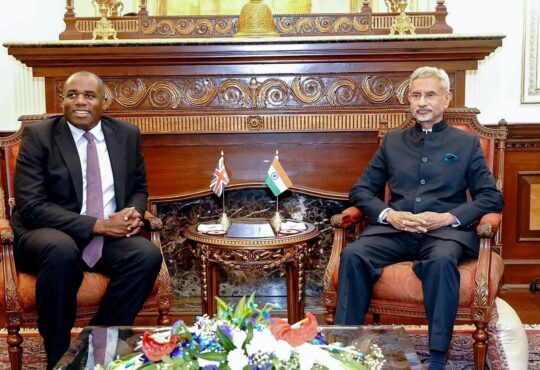From China to India, US: Media coverage during Covid-19 reveals the power of controlling narrative
At the beginning, the average global media coverage was negative. In the next six months, there was a rapid divergence. Media coverage of democracies remained significantly and consistently negative while the Chinese narrative shifted
Narratives drive the perception of economic strength. Corporate finance literature has repeatedly shown how stories impact stock prices. Strategic use of financial and investor communication has a significant impact on the performance of firms. Stories are planted or emerge organically and “go viral”. Like diseases, they spread person to person through word of mouth and become larger contagions through networks of media. The trajectories of stock markets and economies have been closely tied to stories and narratives of the time. Robert Shiller’s fascinating book from 2019, Narrative Economics: How Stories Go Viral and Drive Major Economic Events brings to the fore this phenomenon. Shiller argues that we must incorporate the contagion of narratives into economic theory, otherwise we remain blind to a very real and important mechanism for economic change as well as a fundamental element for economic forecasting. Given the emergence of real-time big data and statistical tools, we are now able to identify some of these phenomena and map the arc of modern narratives using modern tools. Some of these tools entail counting words and phrases in available digitised texts while others include more sophisticated methods to capture the “tone” of media coverage. Using natural language processing and simple word counts, we have contributed to this literature in the last few years. Some of the most fascinating research that has emerged looks at how countries “manage” narratives. A unique and novel database — Global Database of Society — is a part of the GDELT project that monitors all kinds of news covering broadcast, print, and digital, across the globe in more than 100 languages. This database claims that it “identifies the people, locations, organisations, themes, sources, emotions, counts, quotes, images and events driving our global society every second of every day”. The primary purpose of the data is to create an open platform “for computing on the entire world”. And while it appears as an immodest self-declaration at first, it is indeed a database with immensely powerful potential. We exploit the GDELT database to study how the global media covered different countries during the Covid-19 pandemic. The data covers media outputs in more than 100 languages across the world. It records events such as protests, ease of restrictions on political freedoms, appeals for rights etc. The details include the actors involved, the date of the event as well as information on geographic, religious and ethnic details, in particular, the country of the actors, and the number of mentions of the event. The higher the mentions, the more important the event. The average “tone” associated with the event is a numeric value that can range from -100 (extremely negative tone) to +100 (extremely positive tone). The typical values range between -10 and +10, with zero indicating a neutral event. In our analysis, we limit ourselves to events from March 2020 when WHO declared the pandemic to September, six months thereafter. We analysed millions of events, where the major actors were from five large countries — India, USA, China, Sweden and Germany. We estimated an average daily tone for each of the five countries by constructing a weighted mean of all the events recorded on that date, with the number of mentions as a weight for each event. Our main objective was to identify the pattern of the daily weighted average tone of the events related to these five countries in the first six months of the global pandemic. The results are striking, although not entirely surprising. At the beginning of the pandemic, the average global media coverage of all five countries was negative. This is along expected lines, as the role of the media is to highlight problems wherever they are. In the next six months, however, there was a rapid divergence between the four democracies and China. While media coverage of democracies remained significantly and consistently negative, we see that the global media coverage of China became increasingly less negative and even positive over time. This is a remarkable result. If the data only included Chinese media, we would attribute this to hard censorship within the country. But this data includes media coverage from across most countries of the world and in over 100 languages. We find that on average, global media outlets — including broadcast, print and digital — have glowing coverage of China. This is not the power of censorship but of money and influence. It captures the intensity of Beijing’s campaign to influence media outlets across countries of the world . Free and open societies have press freedom and this is reflected across all democracies in our analysis. Large federal democracies like India and the United States as well as relatively smaller more homogenous democracies like Sweden and Germany – all are consistently faced with negative media coverage. This is exactly what is expected from open democracies where the media has an important role to play as the fourth pillar in disseminating information, knowledge and balancing overall power. The larger concern, therefore, is the grave influence that an authoritarian country like China exerts on the so-called “free” press from across countries of the world. Research has also convincingly shown that novel negative news travels much faster and further than the truth. The obvious implication for democracies where the media is often a market-driven enterprise is then the promotion and publication of sensational stories that gather more eyeballs. In contrast, in authoritarian countries where the media is heavily regulated, it is used to facilitate the positive and not necessarily the true image of the state. Under both circumstances, truth becomes the victim. Stories are being planted and narratives are being managed. This is likely to intensify in the near future because the power to coordinate among democracies has weakened substantially with the decline of multilateral institutions. The notable changes in technology, especially the rapid expansion of social media and search engines across the world, have altered the way stories and contagions spread and narratives are being shaped. There is now increasing pressure on leaders to counter false or misleading narratives and work towards establishing a moral authority against them. Increasingly our institutions will also be under threat from fake narratives. Policymakers must create and disseminate counter-narratives that establish more rational and public-spirited behaviour by firms and individuals. Economists must collect more real-time data on time-series that can be used to track and quantify narratives as they correlate with economic events. As the race to control narratives gathers momentum, it would be wise to recall the words of poet Muriel Rukseyer who wrote in her poem, The speed of darkness — “…the universe is made of stories not of atoms.” The writer is Member, Economic Advisory Council to Prime Minister of India
You have exhausted your
monthly limit of free stories.
To continue reading,
simply register or sign in
Continue reading with an Indian Express Premium membership starting Rs 91 per month.
This premium article is free for now.
Register to continue reading this story.
This content is exclusive for our subscribers.
Subscribe to get unlimited access to The Indian Express exclusive and premium stories.
This content is exclusive for our subscribers.
Subscribe now to get unlimited access to The Indian Express exclusive and premium stories.
© The Indian Express (P) Ltd






